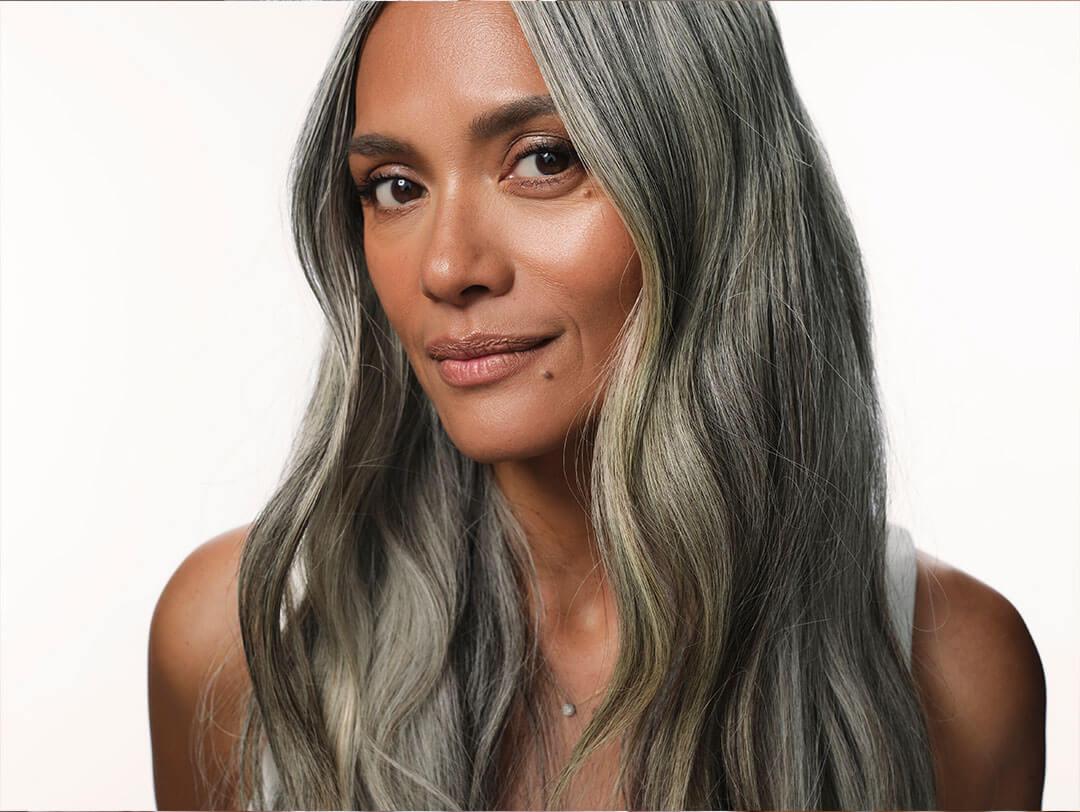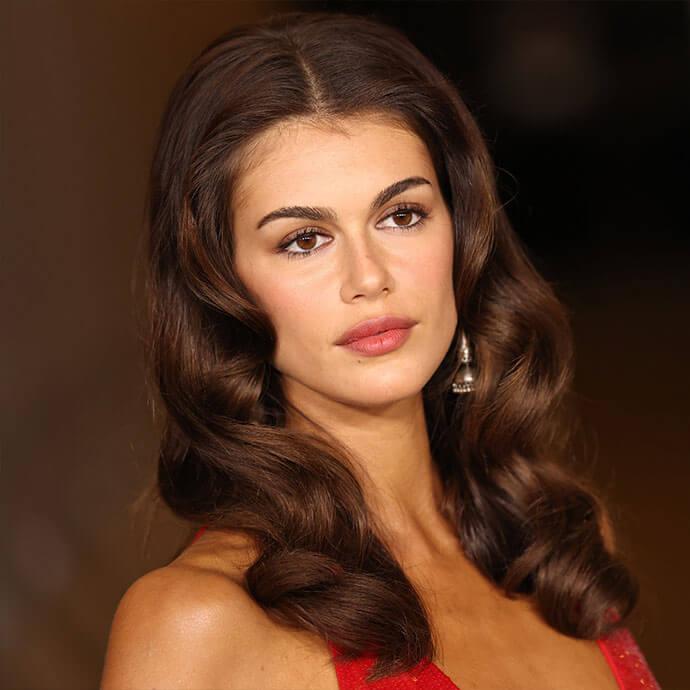Hair Density Isn’t the Same As Thickness—But It’s Just As Important To Understand



Dahvi Shira


Much like fine hair and thin hair, there’s often a discrepancy between dense hair and thick hair. While it’s understandable why confusion exists, it’s important to know the difference, because recognizing your hair density will determine how to better care for it, how to guide stylists, and how to enhance its hair growth and prevent hair loss. We chatted with two experts well-versed in the space, to break down the definition of hair density, how to determine your own, and how hair health, ethnicities, and genetics can play a role in identifying this.
If you’re worried about your own hair density, there’s plenty of dermatologist-recommended hair care products that can help you achieve healthy hair, regardless of your natural hair’s density or even thickness. There are also of course supplements you can look into if you experience nutritional deficiencies. The bottom line: Your hairline isn’t doomed for good if you’re feeling uneasy at the moment. Some swift changes to your hair care routine and some serious chats with experts should have you on your way to happy, healthy hair.


It's about glam time you treated yourself.
MEET THE EXPERT
Naomi Vera is a hairstylist and DEVACURL ambassador.
Kimberlee Blakley is a trichologist and Senior Director of Product Development for THE MANE CHOICE hair care.
1. What Is Hair Density?
We now know that hair density doesn’t directly correlate with hair thickness, so what exactly is it? “Hair density refers to the number of individual hair strands per square inch on the scalp,” says trichologist Kimberlee Blakley. “It’s typically categorized as low, medium, or high. Genetics and environmental factors can influence the density of someone’s hair.”
2. Why Does Hair Density Matter?
Much like the importance of understanding your hair type, you need to understand your hair density to properly care for your hair.
“Hair density plays a big part in how hair products perform,” Blakley explains. “Understanding a person’s hair density helps identify which products to use and which ones to stay away from. Density or loss of density may be caused by underlying health issues, so it is good to always pay attention.”
In addition to personal importance, being aware of your hair density also affects how your stylist cares for your strands.
“For a stylist, it matters in terms of understanding how to maneuver the cut, like where to layer on a head shape,” says hairstylist Naomi Vera. “Someone with less density will require more hair at the perimeter to avoid creating holes or to accomplish desired shape.”
3. Hair Density vs. Hair Thickness
So now, the answer to the burning question: What’s the difference between hair density and hair thickness?
Simply put, “Hair density refers to the number of hair strands per square inch of the scalp—categorized as low, medium, or high,” says Blakley. “And hair thickness, or diameter, refers to the width of individual hair strands, categorized as fine, medium, or coarse.”
Hair thickness is also determined by hairs per square inch of the head, but according to Vera, thickness is also in conjunction with hair texture, which comes down to fine, medium, and coarse. “Someone can have fine hair but high density,” she explains. “Another person can have coarse hair but low density. It can result in hair thickness feeling slightly similar when all grabbed together.”
4. Different Types of Hair Density
Low Density: According to Blakley, low hair density refers to fewer hair strands per square inch of the scalp. “Hair may appear thin and sparse,” she says. “It’s best styled with volumizing products to create the illusion of fuller hair.”
Medium Density: The pro says medium hair density means the strands per square inch of the scalp aren’t scarce, but they aren’t voluminous. “You can be versatile with styling options, but you may benefit from products that provide moderate hold and volume,” Blakley explains.
High Density: Lastly, there’s high, which is the most commonly desired hair density. There are more strands per square inch of the scalp. “The hair appears thick and full,” Blakley says. “Styling may require more product to manage volume, and heavier products for control and definition.”
5. 2 Methods to Find Your Hair Density
1. Count Individual Strands
This is the most traditional way to identify hair density, but it’s not necessarily the most practical. “I don’t know who has time to sit there and count each and every single hair per square inch of the head,” says Vera. “But that’d be one way to do it.”
2. Give a Quick Glance
The easiest, most practical way to determine hair density is simply with a quick glance. “Looking at my clients’ head from over top, the scalp visibility is a great tell,” Vera explains. “If I can see their scalp, chances are they have lower hair density. If I can only slightly see their scalp, it’s probably more medium. If I can’t see their scalp at all, they are high density.”
6. Hair Care Tips for Your Hair Density
Low Density
The lower the density, the greater you need to amplify what you’ve got.
“Use lightweight, volumizing products to add fullness and lift,” Blakley suggests. “Avoid heavy styling products that can weigh hair down. Recommend volumizing shampoos, lightweight conditioners, and volumizing mousses.”
Her recs? THE MANE CHOICE Alpha Easy on the Curls Detangling Hydration Shampoo and THE MANE CHOICE Alpha Soft As Can Be 3 In 1 Co-Wash.
Vera agrees with these types of styling products “as a way to promote lift away from the scalp to defuse visibility,” she says. “But, on the flip side, if it’s less layered or one length, I might use a medium-weight product. I’ve also used a heavier product choice when too much volume exposes more scalp, leaving my client feeling less confident.”
Her picks? The DEVACURL Frizz Fighting Volumizing Foam and Styling Cream. We’re personally huge fans of the LIVING PROOF Full Thickening Cream because it’s soft, lasts for hours, and really offers the appearance of full-bodied strands.
Medium Density
For medium density hair, it’s all about balance.
“It’s important to incorporate products that provide moisture and nourishment without being overwhelming,” Blakley says. “I recommend hydrating shampoos, conditioners with moderate conditioning properties, and styling products suitable for various styles. Her pick? THE MANE CHOICE Ancient Egyptian Anti-Breakage Hair Mask.
“Medium and high-density hair have more versatility in cuts and product choice,” says Vera. “For them I’d focus more on their desired goal and preference as far as shape, frizz control, or definition are concerned.”
High Density
For high density hair, you’ll want to focus on products that offer control and definition without sacrificing volume. Blakley recommends creamy, hydrating shampoos and rich conditioners for moisture, along with styling products that have a strong hold for shaping and defining hairstyles. Her top pick is THE MANE CHOICE Doesn't Get Much ‘BUTTER’ Daily Hair Dressing. When we opt for curls or we want to keep our high density hair in place, we turn to the MARC ANTHONY Strictly Curls Curl Defining Lotion. It smells great and makes our hair feel nourished and moisturized while still maintaining hold.
Vera offers a pro tip for medium to high density hair: “Before reaching for more product, reach for more water for even distribution.”
Want in on all the IPSY hair fun and more? Take our Beauty Quiz now to get started with your own IPSY beauty subscription. Already an IPSY member? Refer your friends to earn points, which you can use toward products. Either way, don’t forget to check us out on Instagram and TikTok @IPSY.
Like this article? Share it with your friends by clicking the icons below!
Liked this post? Share!
Related Stories


Hair
6 Hair Trends Set to Take Over in 2026, From Bixie Cuts to Bouncy Blowouts
Published on Dec 5, 2025 • 5 min read


Hair
21 Easy Hairstyles to Enhance Your Natural Curls and Coils
Published on Dec 3, 2025 • 11 min read


Hair
The Ultimate Guide to Styling Short Hair
Published on Dec 1, 2025 • 11 min read


Hair
From Bangs to Blonde: The Hair Trends Taking Over 2025
Published on Dec 16, 2024 • 5 min read


Hair
Scalp Exfoliation Is the Key to Healthier Hair—Here’s How to Do It Correctly
Published on Nov 21, 2025 • 9 min read


Hair
The 10 Best Hair Masks and Conditioners to Promote Hair Growth
Published on Mar 11, 2024


Hair
20 Trendy Hairstyles That’ll Make You the Life of the (Holiday) Party
Published on Oct 15, 2025 • 9 min read


Hair
Easy Thanksgiving Hairstyles to Look Polished While You Feast
Published on Oct 2, 2025 • 6 min read


Beauty Picked Just for You
Get 5 products worth up to $70
Plus exclusive access to epic deals up to 80% off
Starting at just $14/month. Cancel anytime.